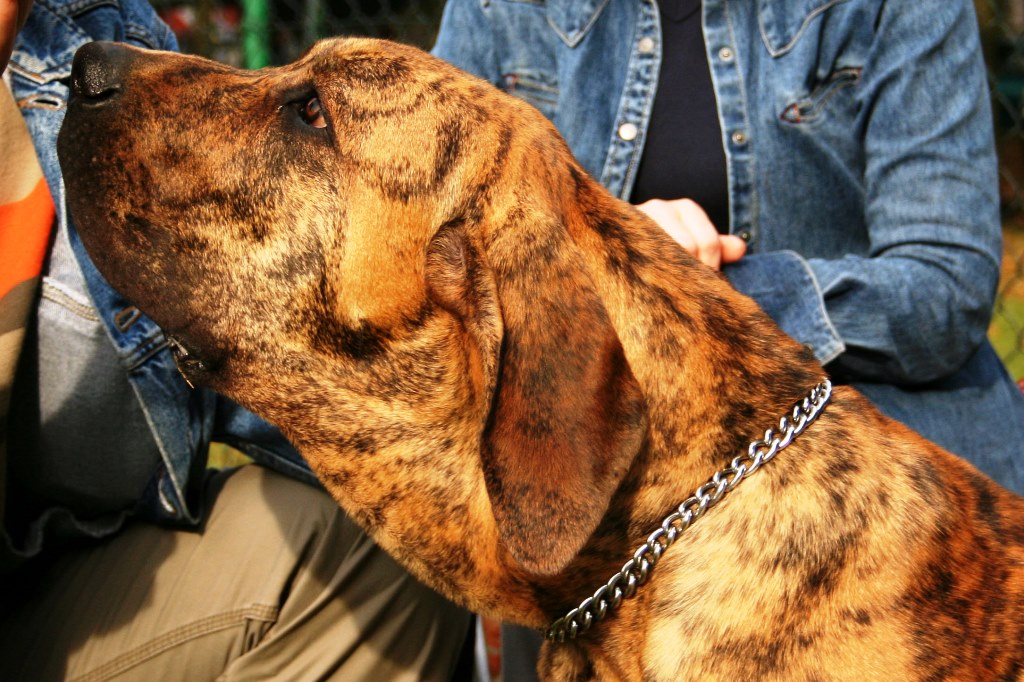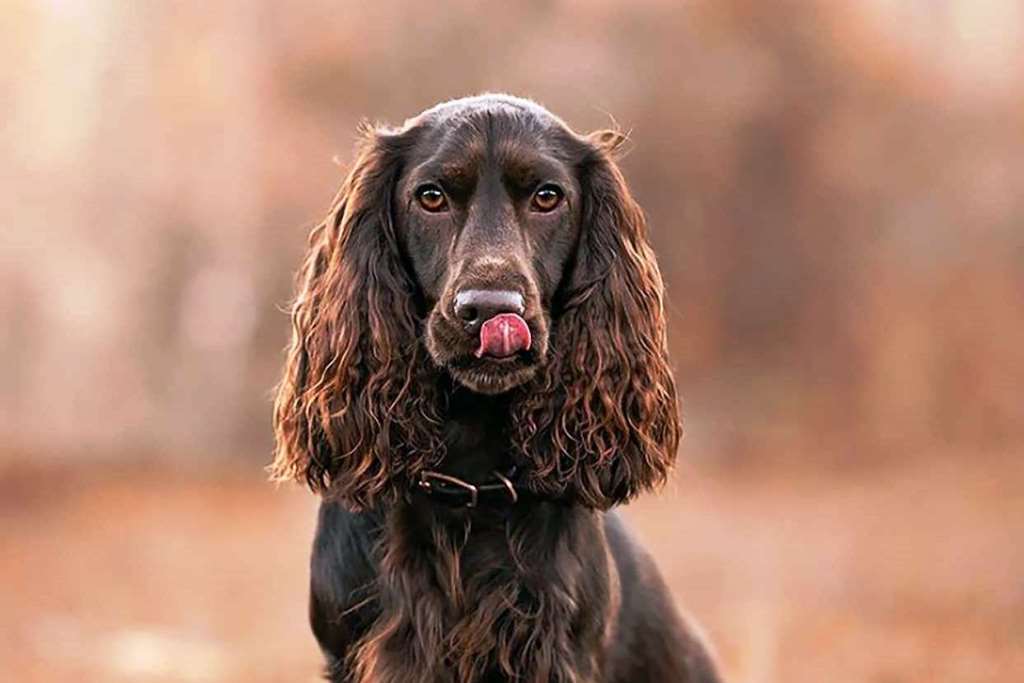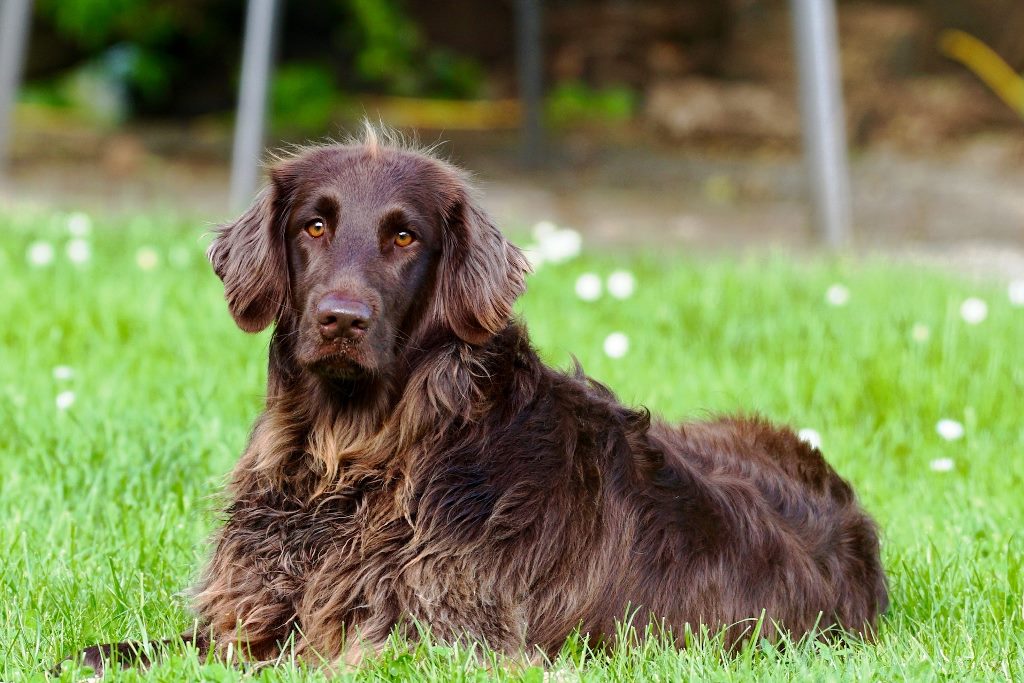The origin of the Fila Brasileiro is Brazilian, because it developed in Brazil, with dogs that, however, came from Portugal, following the first colonisers of Brazil. We are therefore talking about the 15th century. The origin, however, is not very clear; there are several theories, but none are certain. The most widely accepted hypothesis is that they derive from fighting molossi from Europe. Breeds such as Mastiffs and Bloodhounds, and even Bulldogs, are said to be the ancestors of this very powerful and courageous dog, which has been used for centuries to hunt jaguars, protect livestock, property and owners. Its name ‘fila’ stands for one of the main functions of the Fila Brasileiro, to hold escaping slaves, in fact fila in the ancient Portuguese language means to hold.
Some cynophiles speculate that its ancestors included the fila teraceirense, and the engelsen doggen. In fact, the Fila Brasileiro has parts of both and they are recognisable: from the engelsend oggen or from the ancient bulldog it has retained the temperament and stubbornness, but also the colours, the great endurance and the physical structure of the hindquarters.
However, this dog was the faithful companion of the first colonisers of Brazil, accompanying them through the centuries as a perfect guard dog. Unfortunately, over time, this type of animal was increasingly in demand and breeders in those times did not ask themselves so many questions about the purity of the breed and crosses were made with other molossi to make it even more powerful and strong.
This was until the middle of the 19th century, when there was the first appearance of this breed at a dog show, it was the year 1930, another 4 years were to pass before the second. In 1947, the first litter was registered at the Kenel Club Paulista. But it was in 1948 that Dr. Paulo Santos Cruz, who would later be recognised as the father of the breed, took some subjects of that new breed with him, becoming so passionate about it that he became its breeder and then its judge. He wrote and publicised the qualities of this dog in the main dog magazines, giving rise to a real interest in the breed on a national level. In just a few years, in fact, many breeders sprang up. In 1950 it was he himself who began to draw up his first breed standard. In 1968, the breed was officially recognised by the FCI.
Character of the Fila Brasileiro dog breed
The Fila Brasileiro is a dog whose loyalty has become proverbial. It is calm, confident and self-possessed, remaining indifferent to noises or strange circumstances. With its owner it is very docile and obedient and always seeks his company. And not only its owner’s, but also its family, including children with whom it is very tolerant.
It is a guard dog; it is described as the best guard dog in the world. Although it is not only a guard dog, it is also a working dog, and today also a companion dog. With strangers it is very reserved, and sometimes if it senses danger it can become aggressive, but if you gain its trust it becomes friendly. This applies to people presented by the owner from whom he initially stays away and does not wish to be touched.
He is not very aggressive towards other dogs, it is sufficient to socialise him from an early age with his peers in order for him to be comfortable. He can also get along well with other animals in the house, as long as he lives there from an early age. The fila is a brave, bold and determined dog. Its socialisation and education must be firm and gentle at the same time. It is not a dog for the inexperienced. Neither is it for the elderly or sedentary, as it needs to run and move daily and has little tolerance for city spaces, which are too cramped for it. The ideal is a house in the country with a garden, because his perfect lifestyle is outdoors. But it is not to be relegated to the garden just to keep watch, it needs human contact, especially that of its owner.
Because of its elegant bearing, it is now also used in beauty contests.
Appearance of the Fila Brasileiro dog breed
The Fila Brasileiro is a large dog, morphologically defined as a molossoid. The height for a male at the withers is between 65 and 75 centimetres with a weight of more than 50 kilograms. The female a few centimetres less with a weight of more than 40 kilograms. In this breed the females are different from the males with much less square features and are immediately distinguishable from the males.
The skeleton of the line is powerful and robust, the structure rectangular and compact, but it is nevertheless harmonious and well-proportioned. Its massive appearance, however, reveals a great deal of concentrated agility. Its gait is peculiar; it has a long, supple feline stride, the main characteristic of which is the amble, i.e. the gait of quadrupeds when they move their limbs on the same side at the same time. Also called camel stride, it causes a rolling or rocking of the chest and hips, accentuated by the tail when carried erect.
The tail is very thick at the root, inserted in the middle, tapers rapidly to reach the level of the hock.
When the dog is in attention, the tail is raised and the curve at the end is more accentuated.
The head is large, heavy, but in proportion to the body, with a large, black truffle and wide nostrils. The muzzle is slightly shorter than the skull. The ears are large, pendulous and V-shaped; they are wide at the base, but narrow towards the tips with a rounded tip. The eyes are fairly large, almond-shaped and dark brown in colour, which may vary to yellow to match the coat colour. When alert, his posture is alert and his gaze is determined. Its skin is floppy all along the trunk, at the neck it forms a dewlap and also small wrinkles on the skull.
The coat of the Fila Brasileiro is short, thick, smooth and adherent to the body. All solid colours are permitted as coat colours except white and mouse grey or spotted coat. They may also show streaks or bands of a less intense or very dark colour, sometimes a dark mask appears on the muzzle.
Care and health of the Fila Brasileiro dog breed
This dog is very healthy and basically without any diseases typical of the breed, apart from hip dysplasia and a congenital malformation of the development of the eyelids. Unfortunately, it is not a very long-lived dog, its life expectancy being around 9-10 years.
It is a rustic and very spartan breed, but regular almost daily brushing is necessary to care for its coat. During the moulting period, hair loss is not abundant.
As far as its feeding is concerned, care must be taken with a balanced and controlled diet. Food rations must be moderate throughout his growth. If it is not controlled it tends to eat more than necessary with the risk of becoming obese.


